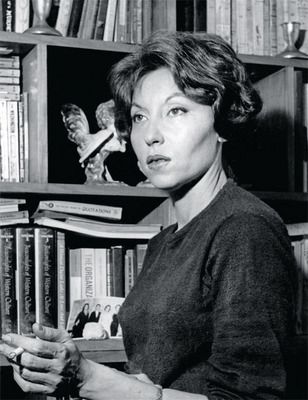
There is a sense of attainment when finishing Clarice Lispector’s The Passion According to G.H., which, admittedly, I started at the beginning of a rainy spring and finished at the end of a summer heat wave. That is because I wanted to digest her language and wordplay as best as I could — a lofty goal, as I soon realized this novel could be dissected for years to come, despite it being published in 1964. Lispector is both methodical and chaotic in amusing with your senses and imagination with her stream of consciousness prose, and reading this feels like a chess game of the psyche. It’s challenging yet satisfying. Once you stop trying to assign meaning and completely understand line by line, and instead let her prose carry you away, that is when you can take in the full brilliance that is Lispector. Though I feel a sense of loss that I’m not able to read this in her Portuguese mother tongue, there is merit in the great work of the translations.
The entire, loosely defined plot takes place inside a room where G.H. comes across a wardrobe and encounters a cockroach. As a result, she plunges deeply into an existential awakening that is the meat of the book. She mentions that life takes place in two phases: the time before coming face-to-face with the cockroach and after. Metaphorically, the cockroach is symbolic of the spiritual realization wherein G.H. purges herself from her only known reality and enters into a state of observation and questioning of existence in and of itself. Her initial reaction to the cockroach turns her disgusted and nauseated, as is the case when she begins to probe the very idea of what it means to exist. She demands to know the meaning of life and what it takes for transcendence. In doing so, she proposes the idea of stripping away what we know is our own ego and identity to face what remains, that is, our very own existence.
“Depersonalization as the dismal of useless individuality–losing everything one can lose and, even so, being. Little by little stripping, with an effort so mindful that one does not feel the pain, stripping, like getting rid of one’s own skin, one’s characteristics. Everything that characterizes me is just the way that I am most easily visible to others and how I end up being superficially recognizable to myself.”
Lispector’s philosophical and introspective weaving of the passages leaves a lasting impression on the reader. Her tone is cryptic and mystical, which is fitting for the topic at question. She goes back and forth with explicit analogies to being in the room with the cockroach, as if to depict the mental deliberation one endures when undergoing this form of self-actualization. As she continues to guide the reader delicately and holds their metaphorical hand through this transformative experience, she challenges the ideas of societal norms, the presence of a God, what it means to be a woman herself— which takes the form of a human—and an appreciation for the nature of the world.
“But my liberation will only come about if I have the immodesty of my own incomprehension. Because, sitting on the bed, I then said to myself: — They gave me everything, and just look what everything is! it’s a roach that is alive and that is about to die. And then I looked at the door handle. After that, I looked at the wood of the wardrobe. I looked at the glass of the window. Just look at what everything is: it’s a piece of thing, a piece of iron, of gravel, of glass. I said to myself: look what I fought for, to have exactly what I already had, I crawled until the doors opened for me, the doors of the treasure I was seeking: and look what the treasure was! The treasure was a piece of metal, it was a piece of whitewash from the wall, it was a piece of matter made into roach.”
Her observation of these objects is the raw material that contrasts with an immaterial existence. She pursues the ‘treasure’ she is looking for, only to find out that the truth is, there is no rational way to comprehend the question she is asking. For centuries, science and religion have tirelessly sought out this explanation, and yet no answer unites the world. Lispector assures us that we must radically accept that it is and be what it is. This revelation proceeds to the climax of the book, where she concludes her pursuit of an answer, surrenders to the truth, and eats the cockroach. Many writers have attempted this kind of philosophical and existential literature, and Lispector stands out among the crowd with her raw and groundbreaking approach. The Passion According to G.H. is a stimulating piece of work that requires multiple read-throughs. It may resonate well with some and appear unsettling to others, just as the subject matter does. Lispector knows how to leave a lasting impression and revolutionized the way we think about our own existence.